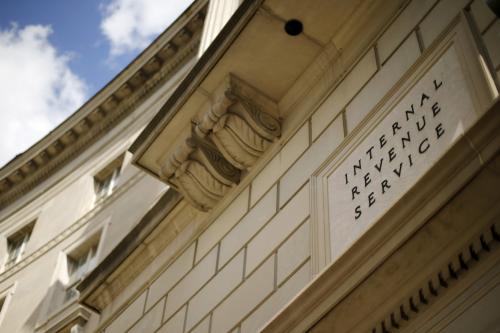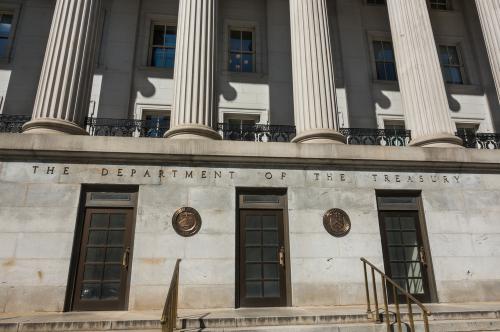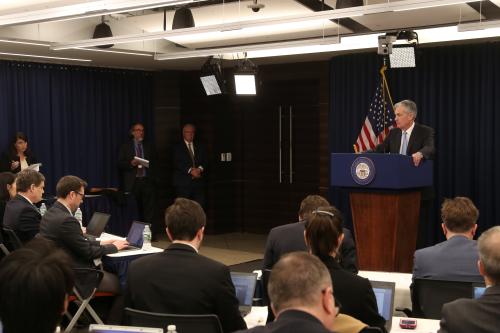This op-ed was originally posted in the Washington Post on May 8, 2019.
When congressional Republicans and the Trump administration pushed for their tax cuts in 2017, they promised American workers that slashing the corporate tax rate would raise their wages.
They offered two rationales for this promise: that companies would share some of their gains with workers right away by raising their pay, and that they would also invest more in equipment, thereby raising productivity and worker wages over time. Indeed, higher wages were supposed to be the main benefit to the broad public of a tax cut package that otherwise was heavily tilted toward the rich and inflated the national debt.
But, to date, those predictions have mostly failed to come true. Corporate stock buybacks have swamped other uses of the tax savings. Wage growth has edged up very modestly since the tax cuts passed, more likely due to tight labor markets than the tax cut. When helping workers, many companies have chosen one-time bonuses instead of permanent increases in base pay. Furthermore, the growth in investment has also been modest, and more likely driven by high oil prices than lower taxes.
But a different version of the same corporate tax cut could indeed raise worker wages. Suppose Congress, which cut the corporate tax rate from 35 percent to 21 percent in 2017, clawed back several percentage points — and then doled them back out to companies that actually paid their workers more. In this case, the overall size of the corporate tax cut could remain the same, but it would encourage companies to raise wages.
How would such a tax law work? In one approach, firms could earn reductions in their tax rate for annual wage increases above a certain base rate of wage growth, with tax cuts growing larger as wage growth rises. And firms that already pay their workers above their industry average might also get a tax cut, with larger cuts for companies paying more above the average. We could also provide additional tax cuts for profit-sharing, generous benefits or even apprenticeships through which companies invest in their workers’ productivity and pay.
Would such a proposal constitute undue government meddling in private-sector labor markets? Not at all. The wages of America’s workers — especially those without college degrees — have stagnated for decades now, with too little of private-sector productivity growth being shared with them. In fact, the stagnation in the living standards of ordinary American workers, along with massively growing inequality in wages and incomes, ultimately threatens the legitimacy of our private market system and the stability of our politics.
And there is another strong economic rationale for rewarding good-paying firms. Companies in any given industry don’t all pay their workers a single market wage — they often choose to pay well above or below that average, even in competitive markets. Companies choosing the “low road” in wages compete on the basis of low labor costs, while those choosing the “high road” compete on the basis of higher worker performance and productivity, as well as lower turnover costs.
If some companies can be equally profitable by paying workers less or more, while also making the overall economy less or more productive, then the high-wage approach is what economists call a “public good” — and private markets provide too little of it on their own. So the government should encourage higher-wage employers through subsidies (including tax cuts) and other regulations, including higher minimum wages and legal protections for unions.
In recent years, fewer and fewer companies appear to be taking the high road — though there are some exceptions. For instance, Walmart and Amazon have recently chosen to raise their employees’ pay and invest more in training them. They are experimenting with whether a higher-road approach to employment actually improves their bottom lines. (Amazon chief executive Jeff Bezos owns The Post.)
Of course, some companies might respond to tax cuts for higher pay by gaming the system. They might lay off some of their lower-wage workers, or turn them into independent contractors, to raise the average pay of those still on their payrolls. They could also raise average pay but meanwhile cut benefits such as health insurance. But Congress could stipulate that companies engaging in such tactics would forfeit their rights to the larger tax cut.
Right now, we’re not sure how much companies would respond to these kinds of tax incentives by raising worker wages. But, given the costs that wage stagnation now imposes on American workers, and our overall economy and politics, it’s worth a shot. And we would finally make true the original promise of higher wages on which the Republican tax cuts were based, while imposing no great burden on corporate America.
The Brookings Institution is committed to quality, independence, and impact.
We are supported by a diverse array of funders. In line with our values and policies, each Brookings publication represents the sole views of its author(s).






Commentary
Op-edYes, corporate tax cuts can raise wages. Here’s how.
May 9, 2019